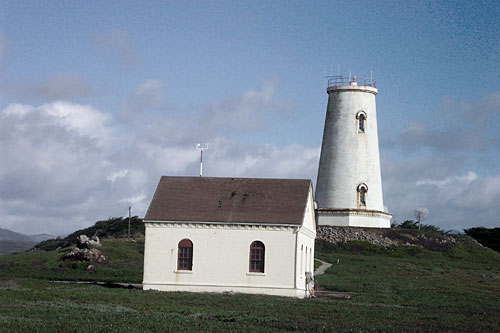Piedras Blancas Lighthouse
Piedras Blancas Light Station was originally built by the United States Lighthouse Board in 1874 and was transferred to the Coast Guard in 1937. On October 12, 2001, Piedras Blancas Light Station was officially transferred to the Bureau of Land Management. A formal transition ceremony was held on May 25, 2002 and that very night a new aero beacon was first illuminated. BLM is now in the process of restoring Piedras Blancas Light Station to its former glory. Public tours of the property are now offered.


